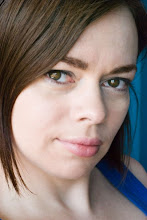Humans are creatures obsessed with vision. We travel the globe to see all the greatest "sights," we go to galleries (both online and brick and mortar) to see images created by other humans, we make sure to take our cameras everywhere so we can capture the visuals of our lives, and when it comes to our nuptials, one of the biggest personal events we experience, we spend small fortunes making sure that everything looks just right, and is captured and reproduced by the best photographers we can afford.
Our vision obsession is so great, it's like an illness, a compulsion, and cinema is only too happy to feed the disease. In fact, one could say that cinema was born from our desire to see more, our desire to capture and watch, to see what we haven't seen and can never see without the help of filmmaking. A still image is exciting, but think of the thrill that must have been experienced the first time images moved. Many childrens' toys in centuries past made use of the as yet undiscovered peculiarities of human vision and psychology called the Phi Phenomenon and Persistence of Vision. Apparently we have been playing with zoetropes since 180AD. It was inevitable that this obsession would take us further. And with our desire to see things that we ordinarily aren't permitted to see (voyeurism) driving us, we found a way. In 1877, Eadweard Muybridge famously settled a debate (over whether or not a horse's hooves ever all leave the ground at once during a gallop) by developing the next precursor to motion picture. Our desire to see pushes technology more and more each year to give us something we haven't seen. In fact, now with advancements in CGI, we are able to see worlds that have only previously been dreamt of.
Cinema allows us to see the sights of our lives as well as dreams of other experiences beyond anything we'd ever have access to in our own existences. But is there more to understanding visuals than to simple appreciation? Certainly. Directors, Cinematographers, Gaphers, and a host of movie grunts work diligently to titilate our eyes, to provide us deeper meaning through visual expression, and to enhance our experience of story. Contrary to those that believe that breaking down movies detracts to the experience of story, in fact, looking closely at the techniques used by these visionmakers can enhance your understanding of what you see. Over the next several weeks we'll be looking together at filmmaking techniques that are related to visuals and creating quality and meaningful images in film. Hopefully as you follow along, you will gain an appreciation for those film magicians and all that they do to enrich our movie experience.
The complete (albeit tentative) schedule for the upcoming series on movie visuals can be seen here.
One issue that often comes up when discussing analysis of texts (be they film or literature or cave paintings) is the question of author intent. And by author I mean the creator of any given text (including film directors). I remember I had a real problem in a high school English class when we discussed the yellow color of a woman's room in the book "Crime and Punishment." I was told to believe that the author used the color yellow to give the idea of decay and puss. I thought this was strange given that my associations with yellow have to do with sunshine and happiness. Then again, looking back, I never actually got that far in the reading, so maybe I would have gotten the decay bit a little bit more if I even knew what we were discussing. (They didn't discuss the yellow room in the Cliff Notes version). For years this discussion typified for me the kind of BS that was constantly flung about the room in film and English classes and made me roll my eyes at the idea of film analysis. But at some point I began to see things differently. Yes, there is a lot of BS out there still. And no one can prove author intent. But an author can choose to paint the room any color he wishes in the world that he creates. You have to ask yourself if there is any significance to the color he ends up choosing. Beyond that, not every author is aware of the meaning behind every choice he makes. Sometimes his own societal influences help him make some of the choices he makes. This does not invalidate the quest to find further meaning in his work, it just means that meaning can come from a number of sources.
Be assured, we will be on a quest for meaning in the how-to articles to follow. I will make cases for meaning with each filmic technique, but some of you may still not be convinced that there is anything beyond story. To people such as you, images are there simply to illustrate a story, they add nothing more than the illusion of reality. For you, I say, try to be open to the possibility that filmmakers choose camera angles, colors, and such for more than just to get the cool shots. Cool shots are important, sure, but in my opinion, a true storyteller will use every device he has available to him to convey clues about character and plot and to develop his world.
Back to the full blog...
Thursday, October 26, 2006
Understanding Movie Visuals, Introduction
Subscribe to:
Post Comments (Atom)


No comments:
Post a Comment